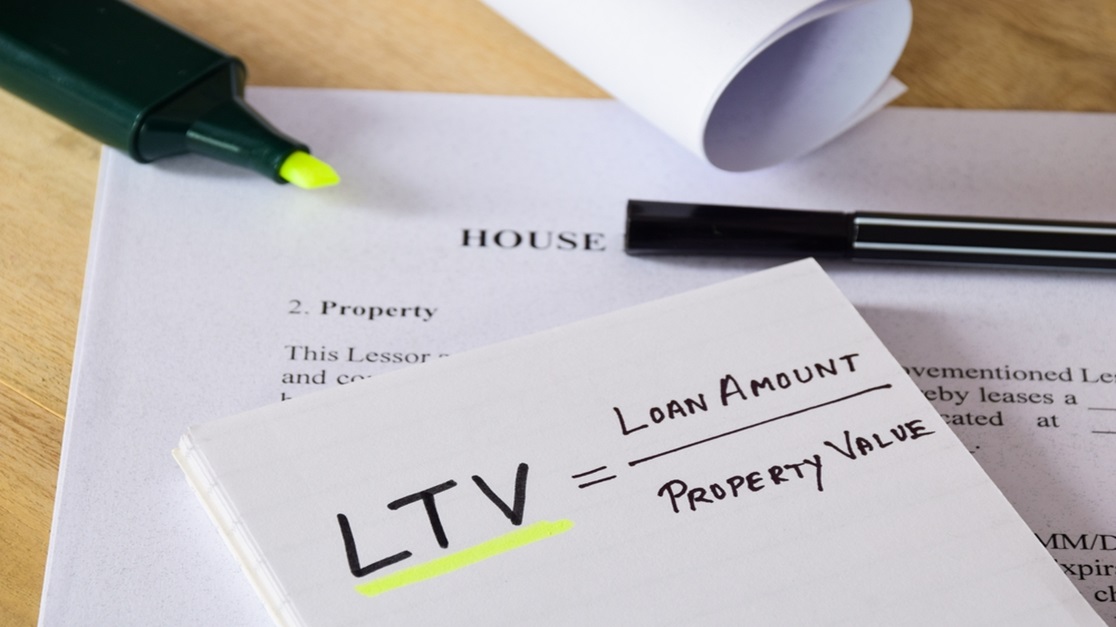What is Loan-to-Value (LTV) Ratio?
March 24, 2025

If you're a first-time homebuyer and planning to apply for a home loan, you will come across a term LTV or Loan-to-Value ratio. First thing first - till date, no bank in India has offered 100% financing of the property value. You get around 75% to maximum 85% of the property value as home loan while the remaining amount is paid out of your pocket. The LTV ratio helps you determine how much home loan you're eligible for and how much amount you have to pay out of your pocket.
In this article, we have explained the concept of LTV ratio in detail so that you stay informed while applying for a home loan. Let's dive in!
What is LTV Ratio?
The LTV Ratio for home loans represents the percentage of a property's value that can be financed through a home loan. Loan to Value Ratio is calculated by dividing the loan amount by the property's appraised value or purchase price, whichever is lower. For example, if you are planning to purchase a property that is priced at ₹1 crore and the banks LTV is 70%, you will be eligible for a loan amount of ₹70 lakh.
Banks will evaluate LTV ratio before approving a home loan to ensure they do not lend an amount that's higher than the property value. A higher LTV ratio could means higher lending risk for the bank and vice versa.
How is LTV Ratio Calculated?
To calculate the LTV ratio, divide the loan amount by the appraised value of the property and multiply by 100 to get a percentage:
LTV = (Loan Amount / Appraised Property Value) x 100
Significance of LTV Ratio on Home Loan Approval
The LTV Ratio plays a crucial role in determining whether lenders approve your home loan application or not. Typically, lenders have specific LTV limits that they are comfortable with based on their risk appetite and market conditions. Higher LTV Ratios indicate higher risk for lenders as it means borrowers need to finance a larger portion of the property's value through a loan. Therefore, lower LTV Ratios are generally preferred by lenders.
Table: LTV Ratio and Home Loan Approval Chances
| LTV Ratio | Likelihood of Loan Approval |
| Up to 80% | High |
| 80.01% to 90% | Moderate |
| Above 90% | Low |
In the table above you would see that as the LTV ratio drops, the chances of you getting a home loan improves.
How Does LTV Ratio Impact Home Loan Eligibility?
Let's say your income qualifies you for a high loan amount. However, banks may still cap the loan amount based on the pre-defined LTV ratio. Point to note: a lower LTV ratio could help you fetch home loans under favourable terms and conditions.
How to Negotiate for a Better LTV Ratio?
To negotiate a better loan-to-value (LTV) ratio for your home loan, consider the following strategies:
1. Improve Your Financial Profile
Strong Credit Score: A higher credit score can enhance your negotiating power, leading to better loan terms, including a higher approved LTV ratio.
Stable Income and Employment: Demonstrating financial stability through consistent income and employment history can make lenders more willing to offer favourable terms.
2. Increase Your Down Payment
Offering a larger down payment reduces the LTV ratio, which can lead to better loan terms and lower interest rates. For instance, if you can increase your down payment from 10% to 20%, it significantly lowers the LTV and may qualify you for lower rates.
3. Comparison Shopping
Approach various lenders to compare interest rates, fees, and LTV ratios. This not only provides insight into what different lenders offer but also gives you leverage in negotiations.
4. Negotiate the Purchase Price
If possible, negotiate a lower purchase price for the home. A reduced sale price will directly decrease your LTV ratio, making it easier to secure better loan terms.
5. Understand Lender Criteria
Be acquainted with the LTV limits set by the RBI based on property value. For example, properties below ₹30 lakh can have an LTV of up to 90%, while those above ₹75 lakh are capped at 75%. Understanding these limits can help you negotiate effectively within banks.
What is a Good Loan-to-Value Ratio?
Generally, a good LTV ratio is 80% or less. Higher LTV ratio indicates higher lending risk for banks. This may translate to higher interest rates and EMIs. Strive to pay more as down payment, at least more than 20%, to secure home loans at affordable interest rates.
Final Thoughts
Understanding the impact of the LTV ratio on home loan approval is crucial when you're looking to finance your dream home. By having a lower LTV Ratio, you increase your chances of loan approval and enjoy more favourable loan terms.
Buying a house has never been this easy! Avail Ujjivan SFB’s wide range of affordable home loan products and enjoy a hassle-free loan journey. From house purchase loan to plot loans and home improvement loans, we have it all! Alternatively, you can browse through Ujjivan SFB product suite - our wide range of financial products are designed to make your financial life better.
Disclaimer:
The contents herein are only for informational purposes and generic in nature. The content does not amount to an offer, invitation or solicitation of any kind to buy or sell, and are not intended to create any legal rights or obligations. This information is subject to updation, completion, amendment and verification without notice. The contents herein are also subject to other product-specific terms and conditions, as well as any applicable third-party terms and conditions, for which Ujjivan Small Finance Bank assumes no responsibility or liability.
Nothing contained herein is intended to constitute financial, investment, legal, tax, or any other professional advice or opinion. Please obtain professional advice before making investment or any other decisions. Any investment decisions that may be made by the you shall be at your own sole discretion, independent analysis and evaluation of the risks involved. The use of any information set out in this document is entirely at the user’s own risk. Ujjivan Small Finance Bank Limited makes no representation or warranty, express or implied, as to the accuracy and completeness for any information herein. The Bank disclaims any and all liability for any loss or damage (direct, indirect, consequential, or otherwise) incurred by you due to use of or due to investment, product application decisions made by you on the basis of the contents herein. While the information is prepared in good faith from sources deemed reliable (including public sources), the Bank disclaims any liability with respect to accuracy of information or any error or omission or any loss or damage incurred by anyone in reliance on the contents herein, in any manner whatsoever.
To know more about Ujjivan Small Finance Bank Products Visit:"https://www.ujjivansfb.in"
All intellectual property rights, including copyrights, trademarks, and other proprietary rights, pertaining to the content and materials displayed herein, belong
to Ujjivan Small Finance Bank Limited or its licensors. Unauthorised use or misuse of any intellectual property, or other content displayed herein is strictly prohibited and the same is not intended for distribution to, or use by, any person in any jurisdiction where such distribution or use would (by reason of that person’s nationality, residence or otherwise) be contrary to law or registration or would subject Ujjivan Small Finance Bank Limited or its affiliates to any licensing or registration requirements.
FAQs
1. How does the LTV) Ratio affect my home loan approval?
The LTV Ratio represents the percentage of a property's value that can be financed through a loan. Higher LTV Ratios indicate higher risk for lenders, potentially impacting your chances of loan approval.
2. What are the loan approval criteria lenders consider?
Lenders consider factors such as credit score, income stability, debt-to-income ratio, and property type when assessing your home loan application.
3. How important is property valuation in the home loan approval process?
Property valuation determines the market value of the property and ensures that the loan amount aligns with its worth. Accurate property valuation is crucial for a smooth home loan approval process.
4. If I have a lower LTV Ratio will it result in better loan terms?
A lower LTV Ratio often leads to more favourable loan terms as borrowers contribute a higher down payment, reducing perceived risk for lenders.
5. How can I calculate my LTV Ratio?
To calculate your LTV Ratio, divide the loan amount by the property's appraised value or purchase price (whichever is lower), then multiply by 100.
6. Can I get a home loan without meeting the LTV ratio requirements?
It is unlikely to secure a home loan without meeting the lender's LTV ratio requirements.
7. How does the LTV ratio affect interest rates?
A higher LTV ratio often leads to higher interest rates, as lenders perceive it as a higher risk. To secure lower interest rates, aim for a lower LTV ratio by increasing your down payment or choosing a property with a lower appraised value.
Latest Blogs

Dussehra 2025: How to Win Your Financial Battles with Smart Saving
Dussehra 2025 (also known as Vijayadashami) falls on Thursday, October 2, 2025.

eSIM Scam in India: I4C Warns Mobile Users About Rising Fraud – How to Stay Safe
The Indian Cybercrime Coordination Centre (I4C), a wing of the Ministry of Home Affairs, issued a strong warning to mobile users about the rapid increase in eSIM fraud in India.

How to Link PAN with Aadhaar: Step-by-Step Guide & Consequences of Not Linking
Linking your Permanent Account Number (PAN) with your Aadhaar is no longer just a best practice.

Annual Information Statement (AIS): A Complete Guide for Stress-Free ITR Filing
India’s tax season is in its final stretch.

ITR-1 (Sahaj) Restrictions: Income Sources Not Allowed & Filing Rules
With just a few days left before the 15 September 2025 deadline for filing Income Tax Returns (ITRs) for Assessment Year (AY) 2025-26, many taxpayers are rushing to submit their forms online.





